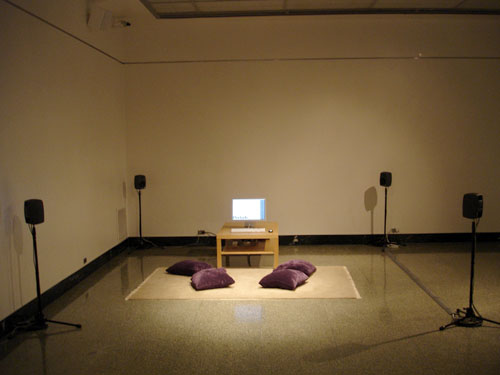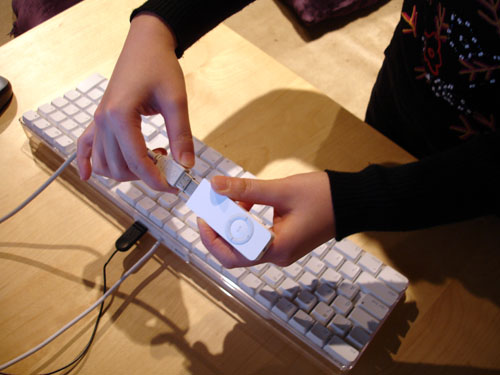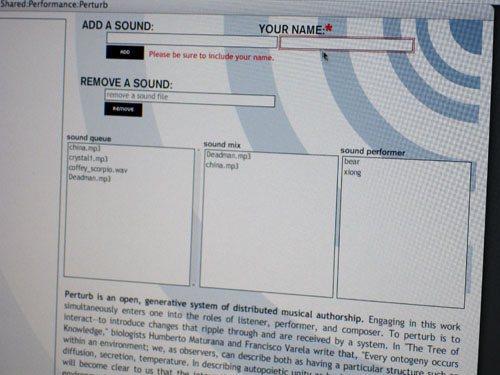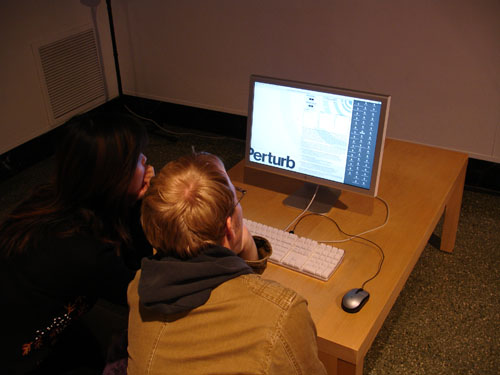Perturb
Perturb is an open, generative system of distributed musical authorship. Engaging in this work enters one into the simultaneous roles of listener, performer, and composer. Perturb is supported by a single personal computer with attached monitor, keyboard, and mouse. These components are arranged with a complementary rug and pillows to make the space comfortable and inviting. Four loudspeakers sit at each corner of the perimeter to spatialize the sound of Perturb.

Perturb at Perform.Media: Transdsiciplinary festival and symposium of creativity, research, theory and technoculture. September 29-October 14, 2006 at the SoFA Gallery, Indiana University, Bloomington, USA
When it is first installed, Perturb generates a very simple sound—a kind of primer for an aural canvas. Visitors are encouraged to construct or join in the performance with their own short recordings, samples, soundscapes, and found sonic objects. Apart from the primer sounds, additional audio material is provided entirely by gallery visitors in either of the following ways: visitors may add their own sounds to the piece by copying them to the Perturb computer from a personal recorder, hard drive, iPod, or USB flash memory drive. Or, they can borrow from their collaborators and choose among the sound files already copied to Perturb by others.

Portable storage devices are used to copy sounds to the computer at the site of the installation.
Perturb uses the particle swarm system (Kennedy & Eberhart's PSO algorithm) that was the foundation of my earlier PSO works. However, in this case the particle swarm is used primarily as a triggering mechanism. The Perturb interface sends messages to software written in Max/MSP. Each message communicates which audio file to play, at what volume, at what position in the quadrophonic field, the reverb parameters to apply, and the envelope to shape a sound's playback. Data from the swarm works to mix the loaded sounds with each other and the primer sounds to create a continuous musical flow from disparate and seemingly incompatible sources.

Sounds are added to the system and tagged through a graphic interface.
The main motivation behind Perturb was to provide public access to the sound resources of a generative music system, and to create a situation in which gallery visitors directly participate in the musical work. In most generative music works, the rules (generative instruments) and sounds that comprise a system are in a black box. Listeners are usually able to start and stop a system, or enter and leave if the music is playing in a specific location. But what happens within that frame is largely outside of their control. Perturb intended to break open the black box and explore a more hands-on experience of generative music.

Participants listen and watch as the mix unfolds.
Listen to Perturb Mix 1:
Listen to Perturb Mix 2:
Listen to Perturb Mix 3:
See the Perturb project site online